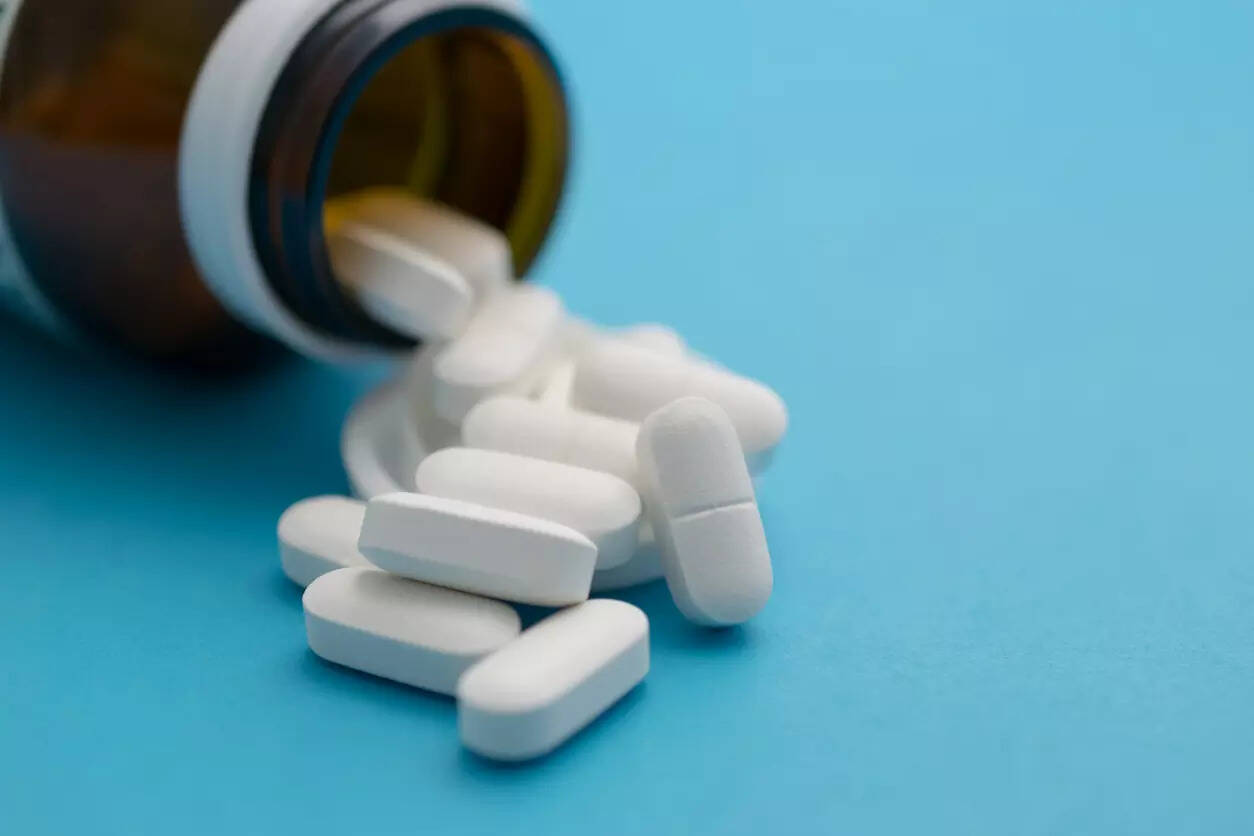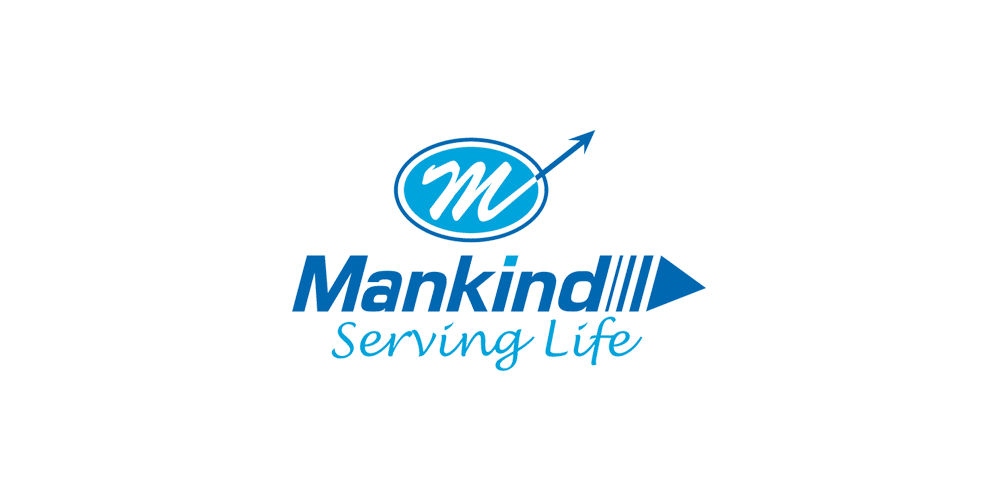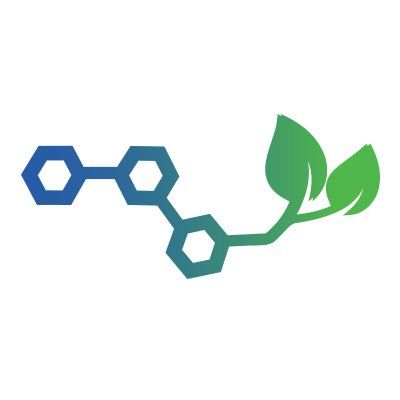预约演示
更新于:2025-09-06
Methyl Salicylate
水杨酸甲酯
更新于:2025-09-06
概要
基本信息
原研机构- |
在研机构 |
非在研机构 |
权益机构- |
最高研发阶段批准上市 |
首次获批日期 日本 (1974-01-01) |
最高研发阶段(中国)批准上市 |
特殊审评- |
登录后查看时间轴
结构/序列
分子式C8H8O3 |
InChIKeyOSWPMRLSEDHDFF-UHFFFAOYSA-N |
CAS号119-36-8 |
关联
18
项与 水杨酸甲酯 相关的临床试验CTRI/2022/11/047591
A single-arm, multicentric, open-label clinical study to evaluate the efficacy and safety of â??Nimulid Strong Gel (Diclofenac Diethylamine, Methyl Salicylate, and Menthol)â?? topical analgesic gel in subject suffering from pain associated with recent muscle or joint injuries such as sprains, strains, or sports injuries.
开始日期2022-11-25 |
申办/合作机构 |
NCT06106880
Alleviation of Upper Respiratory Inflammation and Associated Common Cold Symptoms
Upper respiratory infections (URIs) have long posed a significant burden to the US healthcare system. Well before the coronavirus disease of 2019 (COVID-19) pandemic they have been among the most common acute outpatient illnesses, causing 75-100 million physician visits each year on average, and costing the health care system billions of dollars annually. This double-blind randomized placebo-controlled study tested the efficacy of two anti-inflammatory throat sprays against placebo and against a throat spray taken in conjunction with 325mg of aspirin, a well-known systemically administered cyclooxygenase (COX) inhibitor. Participants having common cold symptoms lasting less than two days were enrolled and given treatment to administer at home. Various common cold symptoms were assessed and measured via clinically validated self-assessment scales. Participants were screened for influenza and COVID-19 before enrollment and were excluded if found positive.
开始日期2022-05-25 |
申办/合作机构 |
NCT05251337
Use of Aromatherapy to Reduce Symptom Burden in Patients Receiving Stem Cell Transplantation
The purpose of this study is to evaluate the effect of inhaled aromatherapy on symptoms of nausea/vomiting and anxiety in patients who have received a stem cell transplant. Aromatherapy involves essential oils from aromatic plants that can be absorbed into the body in different ways. Our study will be using inhaled aromatherapy, which has been found helpful for symptoms such as nausea/vomiting and anxiety.
开始日期2022-03-07 |
申办/合作机构  Indiana University Indiana University [+1] |
100 项与 水杨酸甲酯 相关的临床结果
登录后查看更多信息
100 项与 水杨酸甲酯 相关的转化医学
登录后查看更多信息
100 项与 水杨酸甲酯 相关的专利(医药)
登录后查看更多信息
7,603
项与 水杨酸甲酯 相关的文献(医药)2025-12-31·Plant Signaling & Behavior
Expression characteristics of
CsESA1
in citrus and analysis of its interacting protein
Article
作者: Wei, Wei ; Wang, Huiying ; Zuo, Jiaqi ; He, Xiao ; He, Qing ; Han, Ziyue
The most damaging disease affecting citrus globally is Huanglongbing (HLB), primarily attributed to the infection by 'Candidatus Liberibacter asiaticus' (CaLas). Based on comparative transcriptome data, two cellulose synthase (CESA) genes responsive to CaLas infection induction were screened, and one gene cloned with higher differential expression level was selected and named CsCESA1. we verified the interaction between CsCESA1 and citrus exopolysaccharide 2 (CsEPS2) proteins. Subcellular localization in tobacco indicated that both CsCESA1 and CsEPS2 proteins are primarily located in the nucleus and cytoplasm. RT-qPCR analysis indicated that the expression levels of CsCESA1 and CsEPS2 were associated with variety tolerance, tissue site, and symptom development. Furthermore, we generated CsCESA1 and CsEPS2 silencing plants and obtained CsCESA1 and CsEPS2 silencing and overexpressing hairy roots. The analysis of hormone content and gene expression also showed that CsCESA1 and CsEPS2 are involved in transcriptional regulation of genes involved in systemic acquired resistance (SAR) response. In conclusion, our results suggested that CsCESA1 and CsEPS2 could serve as potential resistance genes for HLB disease, offering insights into the plant's defense mechanisms against HLB.
2025-12-31·JOURNAL OF ENZYME INHIBITION AND MEDICINAL CHEMISTRY
Chemical composition, antioxidant activities, and enzyme inhibitory effects of
Lespedeza bicolour
Turcz. essential oil
Article
作者: Liu, Xu ; Zhu, Jiadong ; Xu, Ziyue
Lespedeza bicolour Turcz. is a traditional medicinal plant with a wide range of ethnomedicinal values. The main components of L. bicolour essential oil (EO) were β-pinene (15.41%), β-phellandrene (12.43%), and caryophyllene (7.79%). The EO of L. bicolour showed antioxidant activity against ABTS radical and DPPH radical with an IC50 value of 0.69 ± 0.03 mg/mL and 10.44 ± 2.09 mg/mL, respectively. The FRAP antioxidant value was 81.96 ± 6.17 μmol/g. The EO had activities against acetylcholinesterase, α-glucosidase, and β-lactamase with IC50 values of 309.30 ± 11.16 μg/mL, 360.47 ± 35.67 μg/mL, and 27.54 ± 1.21 μg/mL, respectively. Molecular docking showed methyl dehydroabietate docked well with all tested enzymes. Sclareol and (+)-borneol acetate showed the strongest binding affinity to α-glucosidase and β-lactamase, respectively. The present study provides a direction for searching enzyme inhibitors for three tested enzymes and shows L. bicolour EO possesses the potential to treat a series of diseases.
2025-12-31·Journal of Plant Interactions
Sugarcane leaf-derived metabolites play important role in
Saccharum officinarum
–
Spodoptera frugiperda
interactions
作者: Wang, Chaoqi ; Su, Liangyinan ; Zhao, Yang ; Chen, Baoshan ; Hu, Chunyu
Secondary metabolites play important roles in the interactions between plants and insects.Given the complexities in these interactions, the role of secondary metabolism in plant-insect interaction is not fully understood.In this study, we identified 46 non-volatile organic compounds (NOCs) and 15 volatile organic compounds (VOCs) that differed significantly between the resistant and susceptible sugarcane lines.Phenolic acids constituted the majority of differential NOCs, with approx. 66.7% of these phenolic acids being more abundant in the susceptible line.Incorporation of phenoxyacetic acid and 4-methoxybenzaldehyde prolonged the pupal period of S. frugiperda larvae.Aromatics accounted for the largest proportion of differential VOCs in the susceptible line.Two aromatics, p-cymene and p-methoxystyrene, were found to attract S. frugiperda, with higher levels observed in the susceptible line.These results provide a basis for studying the role of NOCs and VOCs in the interaction mechanism between sugarcane and fall armyworm (S. frugiperda).
9
项与 水杨酸甲酯 相关的新闻(医药)2025-03-13
·赛柏蓝
润伊容口服液-消痤祛斑标本兼治
1、全国独家傣药产品
润伊容口服液为古老傣药智慧结晶,为全国独家产品,用于风热上逆所致的痤疮、黄褐斑。可调节身体大循环和皮肤微循环,滋养气血改善内分泌,消除色素沉淀,为女性美容养颜传世好药。
2、颜值经济崛起拥有广阔市场
皮肤问题的高发性。痤疮(青春痘)和黄褐斑是两大高发皮肤问题,覆盖人群广泛(青少年至中年女性),且易于反复发作,形成长期需求。消费者对安全、天然、副作用小的解决方案需求迫切,润伊容傣药“草本天然”的定位可精准切入这一痛点。
颜值经济的崛起,社交媒体和网红文化加剧了对外貌的重视,推动护肤市场快速增长,祛痘、淡斑细分领域增长显著。
3、适用人群广泛
功能主治:疏风清热,解毒消痤。用于风热上逆所致的痤疮、黄褐斑。
使用科室:皮肤科
治疗疾病:针对青春期及青年时期,由于环境影响内分泌,造成的皮肤痤疮、以及中青年女性黄褐斑,具有良好的调节内分泌、抗炎作用。
4、多本工具书收录治疗痤疮、黄褐斑
2009版《常见妇科病自我药疗与调理》
2010版《皮肤科常用药物手册》
2019版《新编中西皮肤药物手册》
5、傣药良方、效果显著
独特的傣医理论精准组方,清热解毒,消肿散结,又可以祛风止痒、达到标本兼治的效果,治疗痤疮、黄褐斑疗效确切,产品特点突出。
现代药理研究证明,润伊容口服液能调节内分泌、抗菌消炎、消肿止痛,抑制皮脂炎性反应,可促进皮肤组织内毒素排出,促进疮口愈合。
按摩软膏-止痛更治痛,一抹就轻松
1、独家产品,OTC乙类 ,市场认可度高
按摩软膏由芸香浸膏、颠茄流浸膏、乳香、没药、乌药、川芎、郁金、水杨酸甲酯、薄荷油、肉桂油、丁香油、樟脑共计12味经典中药组成,被广大运动爱好者、白领人群、中老年人推崇,专注缓解软组织酸胀肿痛,口碑极佳。OTC乙类更加方便消费者自主诊疗购药,为第23届奥运会中国代表团指定用药。
2、市场规模大,销售潜力突出
目前,中国每周参与两次以上健身活动的人士达到 3.03 亿人,因运动不当引发的软组织损伤,肌肉酸痛等普遍存在;另65岁以上老年人占比逐年增加,2020年达到2亿,关节疼痛、腰背痛潜在人群持续扩容;都市白领久坐办公,受颈肩痛,腰椎痛持续困扰。
3、治疗范围广泛
功能主治:活血化瘀、和络止痛。用于运动劳损、肌肉酸痛、跌打扭伤。
适用科室:运动外科,骨伤科,康复科,疼痛科。
其他终端:药店,健身房,电商终端。
治疗疾病:运动损伤,肌肉酸痛,跌打扭伤。
4、二项国家发明专利,技术领先
一种活血化瘀、和络止痛的凉性按摩软膏及其制备方法
一种活血化瘀、和络止痛的热性按摩软膏及其制备方法
5、中药良方、疗效显著、使用方便
中药萃取提纯,水包油技术、易吸收,不油腻无污染,使用方便,全方温寒并用,气血并调具有活血化瘀、消肿止痛的功效,使气血通畅 ,肿痛消除,治标更治本。
现代药理表明,使用按摩软膏后,能明显改善局部血液循环,促进疼痛症状缓解,明显增加软组织损伤的治愈率。
消结安口服液-傣药消结显神威
1、全国独家产品,市场认可度高
消结安是全国销售额最高的傣族单品药物之一,销售额过亿元。市场认可度高,被临床乳腺外科、妇科医生广泛使用,在临床应用中效果突出,有非常高的临床口碑。
2、市场规模大,销售潜力突出
现代社会,生活及工作压力大,人长期处于高压环境、情绪压抑,不良情绪致肝气郁结,影响肝经气血运行,致使痰瘀积聚形成结节或肌瘤等。尤其是女性人群,易出现乳腺增生、甲状腺结节、子宫肌瘤和卵巢囊肿等,而这些看似不同部位的问题,实则相互关联。
流行病学研究显示,中国成年女性90%以上都患有乳腺增生,卵巢囊肿发病率在13%~23.9%,子宫肌瘤发病率在20%~30%。
3、治疗疾病范围广泛
功能主治:活血化瘀,软坚散结。用于气滞血瘀所致乳癖,乳腺小叶增生,卵巢囊肿,子宫肌瘤见上述证候者。
适用科室:甲乳外科、妇科等
治疗疾病:乳腺增生、卵巢囊肿、子宫肌瘤。
4、国家临床指南推荐使用
2021年《中成药临床应用指南·妇科疾病分册》推荐治疗子宫肌瘤。
2024年,全国多家三甲级医院参与的随机、双盲,多中心临床试验证明,治疗子宫肌瘤(气滞血瘀夹湿热证),服用消结安3个月后,子宫肌瘤缩小25.97%,明显优于安慰剂组(安慰剂组增大1.31%),且未发现不良反应,疗效显著。
5、傣药良方、疗效显著
独特的傣医清热解毒理论精准组方,活血化瘀、软坚散结,同时清热解毒、疏肝解郁,明确治疗女性三联征(乳腺增生、子宫肌瘤、卵巢囊肿),特别治疗周期性乳痛症效果突出,多重治疗机理适用中医多种证型,方便临床处方。
现代药理研究证明,单独使用消结安,调节内分泌作用疗效确切,与类固醇激素合用,增效作用明显。
四物合剂-源自千年妇科第一方“四物汤”
1、千年妇科第一方
四物合剂源自唐朝蔺道人《仙授理伤续断秘方》中的“千年妇科第一方”【四物汤】,后载于宋代《太平惠民和剂局方》,有养血调经之效,是治疗营血亏虚,血行不畅的经典方剂,多则冗余、少则不足,药少而精,药专力宏。四物合剂是四物汤的现代剂型。
2、市场规模大,销售潜力突出
妇科内分泌相关疾病连年上升,市场需求持续扩大。据《2024年女性健康白皮书》统计,90%成年女性存在卵巢健康问题,30%年轻白领会遭遇卵巢早衰,且以每年100万的基数快速增长。
四物合剂传承千年妇科第一方,养血调经,调节内分泌,有效解决女性卵巢早衰及月经不调等内分泌问题,保护生育功能,守护女性健康。
3、治疗疾病种类多,适用人群广泛
功能主治:养血调经。用于血虚所致的面色萎黄、头晕眼花、心悸气短及月经不调。
治疗疾病:轻度或慢性贫血,月经不调、异常子宫出血、卵巢早衰、闭经、月经过多或过少、多囊卵巢综合征、痛经等多种妇科疾病。
适用人群:抗衰、血虚、月经不调、以及日常具有美容养颜需求的人群。
4、多部国家临床指南推荐使用,证据充分
5、中医药治疗女性内分泌疾病优势明显
西医治疗女性内分泌疾病主要以激素治疗为主,但存在效果不甚理想、诸多禁忌证限制以及长时间应用引起的安全性问题。中医药优势明显,大量的临床研究表明,中西医结合治疗女性内分泌疾病,在恢复月经周期、改善临床症状、提高生活质量、减少西药不良反应等方面效果显著。
健阳片-治疗、阳痿早泄等性功能低下症的基础用药
1、“补通调”结合,标本兼治
健阳片补肾益精,助阳兴萎。用于肾虚阳衰引起的阳萎、早泄等性功能低下症。补肾阳强筋骨,补气固精,治疗勃起功能障碍、早泄疗效确切。
2、市场规模大,销售需求旺盛
国内流行病学调查显示勃起功能障碍总患病率为26.1%,其中40岁以上的男性患病率约为40%。早泄的文献报道患病率通常在20%-30%之间。病因可分为器质性、心理性和混合性,随着现代社会工作生活压力加大,发病率持续上升。
3、治疗疾病明确,应用人群广泛
功能主治:补肾益精,助阳兴萎。用于肾虚阳衰引起的阳萎、早泄等性功能低下症。
治疗疾病:阳萎、早泄、阳萎早泄共病等性功能低下症。
适用人群:性功能低下人群,以及劳累压力大、性过度透支、体虚等需提升性功能的人群。
4、国家临床指南推荐使用,证据充分
《勃起功能障碍中西医结合多学科诊疗指南(2022版)》
《早泄中西医结合多学科诊疗指南(2021版)》
5、中医药治疗男性性功能疾病优势明显
男性勃起功能障碍、早泄需要精准诊疗,化药具有诸多禁忌证限制以及长时间应用引起的安全性问题,随着中西医结合领域的不断深入,中医药治疗方法的融入可极大提高对患者个体化治疗的把握,从而达到更好的疾病治疗有效率。中成药为治疗该类疾病的基础用药,标本兼治,为更多患者优选。
神威药业战略合作联系人
牛经理:0311-88030077
神威药业招商登记入口
神威药业为合作方提供全方位的支持
品牌支持:神威药业为中国医药百强企业,市场知名度高,神威产品以质量可靠,安全,有效,深受医生和患者信赖。
市场推广支持:提供专业的市场推广方案和宣传物料。
学术支持:产品临床专家指南、共识推荐,线上线下学术活动,促进产品销售。
市场渠道管理:严格管理市场,渠道有序,保护广大代理商利益。
配送商网络支持:完善的产品配送商体系,确保货物及时配送终端,减缓代理商回款资金压力。
售后服务支持:售后快速响应机制,解决代理商后顾之忧。
神威药业集团简介
神威药业集团是以现代中药为主业的大型综合性企业集团,全国医药百强企业,香港主板上市公司。主营业务涵盖中药材种植、中药制剂、中药配方颗粒、中药饮片、生物制药、神威大药房连锁、神威中医堂、互联网医疗等上中下游产业链。
集团具有强大的科技研发实力,拥有国家认定企业技术中心、国家地方联合重点实验室、院士工作站、博士后科研工作站,通过国际CNAS认可的国家实验室等众多科研平台,并多次荣获河北省质量管理奖。
神威药业“中药注射剂全面质量控制及在清开灵、舒血宁、参麦注射液中的应用项目”,“益气活血法治疗糖尿病肾病显性蛋白尿的临床与基础研究”二次荣获“国家科技进步二等奖”。神威药业产品400余个, 涵盖17个治疗领域,具有独家自主知识产权产品30余个,产品优势明显,众多基药、独家、医保产品形成了心脑血管、骨科、呼吸,消化,妇儿,增强免疫抗肿瘤六大优势产品线,拥有现代中药注射液、现代中药软胶囊、现代中药颗粒剂、中药配方颗粒四大特色剂型。
声明:此篇文章受众仅为医药、医疗等健康产业专业伙伴,仅供医学药学专业人士参考使用,不能替代医嘱,不针对普通消费大众。
2025-02-20
根据《国家药监局关于发布药品说明书适老化及无障碍改革试点工作方案的公告》(2023年第142号),省级药品监管部门和国家药监局药品审评中心报送了参与试点的药品上市许可持有人和药品名单(第四批),现予公布。序号药品名称药品上市许可持有人1替格瑞洛片华润双鹤药业股份有限公司2非布司他片华润双鹤药业股份有限公司3盐酸贝那普利片北京诺华制药有限公司4甲钴胺片辽宁亿帆药业有限公司5布洛伪麻片辽宁亿帆药业有限公司6盐酸奈福泮片辽宁亿帆药业有限公司7红霉素肠溶片辽宁亿帆药业有限公司8乙酰螺旋霉素片辽宁亿帆药业有限公司9双氯芬酸钠肠溶片辽宁亿帆药业有限公司10益肝灵片辽宁亿帆药业有限公司11复方磺胺甲噁唑片辽宁亿帆药业有限公司12盐酸莫雷西嗪片辽宁亿帆药业有限公司13复方茶碱甲麻黄碱片辽宁亿帆药业有限公司14复方妥英麻黄茶碱片辽宁亿帆药业有限公司15伤科跌打片辽宁亿帆药业有限公司16清脑降压片辽宁亿帆药业有限公司17格列本脲片辽宁亿帆药业有限公司18复方阿司匹林片辽宁亿帆药业有限公司19磷酸苯丙哌林胶囊辽宁亿帆药业有限公司20盐酸环丙沙星胶嚢辽宁亿帆药业有限公司21通便灵胶囊辽宁亿帆药业有限公司22氨咖黄敏胶囊朝阳龙城制药有限公司23对乙酰氨基酚片朝阳龙城制药有限公司24复方龙胆碳酸氢钠片朝阳龙城制药有限公司25维D2磷酸氢钙片朝阳龙城制药有限公司26独一味颗粒朝阳龙城制药有限公司27酒石酸美托洛尔片翎耀生物科技(上海)有限公司28利培酮口服溶液翎耀生物科技(上海)有限公司29阿托伐他汀钙片翎耀生物科技(上海)有限公司30利伐沙班片翎耀生物科技(上海)有限公司31氨己烯酸口服溶液用散翎耀生物科技(上海)有限公司32美洛昔康片上海勃林格殷格翰药业有限公司33利奈唑胺片上海迪赛诺医药集团股份有限公司34富马酸丙酚替诺福韦片上海迪赛诺医药集团股份有限公司35齐多拉米双夫定片上海迪赛诺医药集团股份有限公司36扶正化瘀胶囊上海黄海制药有限责任公司37扶正化瘀片上海黄海制药有限责任公司38替米沙坦片上海现代制药股份有限公司39硝苯地平片上海信谊天平药业有限公司40盐酸氨溴索胶囊上海信谊天平药业有限公司41卡托普利片上海信谊天平药业有限公司42辛伐他汀片上海信谊万象药业股份有限公司43甲氨蝶呤片上海上药信谊药厂有限公司44盐酸二甲双胍片上海上药信谊药厂有限公司45雷贝拉唑钠肠溶片上海上药信谊药厂有限公司46瑞舒伐他汀钙片上海上药信谊药厂有限公司47卡培他滨片上海上药信谊药厂有限公司48双氯芬酸钠缓释片上海上药信谊药厂有限公司49盐酸二甲双胍缓释片上海上药信谊药厂有限公司50盐酸胺碘酮片上海上药信谊药厂有限公司51酚氨咖敏片上海上药信谊药厂有限公司52复方甲氧那明胶囊上海上药信谊药厂有限公司53洛索洛芬钠片上海旭东海普药业有限公司54复方卡托普利片上海旭东海普药业有限公司55盐酸氟桂利嗪胶囊上海旭东海普药业有限公司56盐酸安非他酮缓释片(Ⅱ)上海宣泰医药科技股份有限公司57盐酸帕罗西汀肠溶缓释片上海宣泰医药科技股份有限公司58头孢丙烯胶囊上海新亚药业闵行有限公司59头孢拉定胶囊上海新亚药业闵行有限公司60盐酸克林霉素胶囊上海新亚药业闵行有限公司61阿莫西林克拉维酸钾分散片上海新亚药业闵行有限公司62复方磺胺甲噁唑片上海新亚药业闵行有限公司63头孢克肟分散片上海新亚药业闵行有限公司64甲钴胺片上海新亚药业闵行有限公司65单硝酸异山梨酯缓释片上海新亚药业闵行有限公司66丙酸氯倍他索乳膏上海新亚药业闵行有限公司67林可霉素利多卡因凝胶上海新亚药业闵行有限公司68六神丸上海雷允上药业有限公司69关节镇痛巴布膏上海雷允上药业有限公司70通塞脉胶囊江苏康缘阳光药业有限公司71淫羊藿总黄酮胶囊江苏康缘阳光药业有限公司72夜宁胶囊江苏康缘阳光药业有限公司73通塞脉片江苏康缘阳光药业有限公司74参乌益肾片江苏康缘阳光药业有限公司75六味地黄软胶囊江苏康缘阳光药业有限公司76银翘解毒软胶囊江苏康缘阳光药业有限公司77元胡止痛软胶囊江苏康缘阳光药业有限公司78七味通痹口服液江苏康缘阳光药业有限公司79小儿氨酚黄那敏颗粒江苏康缘阳光药业有限公司80非那雄胺片南京海鲸药业股份有限公司81维生素D2软胶囊南京海鲸药业股份有限公司82瑞舒伐他汀钙片南京正大天晴制药有限公司83替格瑞洛片南京正大天晴制药有限公司84枸橼酸托法替布片南京正大天晴制药有限公司85利伐沙班片南京正大天晴制药有限公司86氟唑帕利胶囊江苏恒瑞医药股份有限公司87脯氨酸恒格列净片江苏恒瑞医药股份有限公司88爱普列特片江苏联环药业股份有限公司89苯磺酸左氨氯地平片苏州东瑞制药有限公司90甲磺酸氟马替尼片江苏豪森药业集团有限公司91替米沙坦氢氯噻嗪片常州制药厂有限公司92达格列净片昆山龙灯瑞迪制药有限公司93马来酸氟伏沙明片昆山龙灯瑞迪制药有限公司94二甲双胍恩格列净片(Ⅰ)杭州中美华东制药有限公司95吡格列酮二甲双胍片杭州中美华东制药有限公司96环孢素软胶囊杭州中美华东制药有限公司97克拉霉素片杭州中美华东制药有限公司98他克莫司胶囊杭州中美华东制药有限公司99吗替麦考酚酯分散片杭州中美华东制药有限公司100吗替麦考酚酯片杭州中美华东制药有限公司101吗替麦考酚酯胶囊杭州中美华东制药有限公司102盐酸吡格列酮片杭州中美华东制药有限公司103阿那曲唑片杭州中美华东制药有限公司104吲哚布芬片杭州中美华东制药有限公司105左氧氟沙星片浙江普洛康裕制药有限公司106非布司他片杭州朱养心药业有限公司107利伐沙班片杭州朱养心药业有限公司108硫酸氨基葡萄糖胶囊浙江施强制药有限公司109盐酸伐地那非片浙江施强制药有限公司110替格瑞洛片浙江海正药业股份有限公司111吗替麦考酚酯片浙江海正药业股份有限公司112瑞舒伐他汀钙片瀚晖制药有限公司113左氧氟沙星滴眼液浙江莎普爱思药业股份有限公司114头孢克肟分散片浙江莎普爱思药业股份有限公司115左氧氟沙星片浙江京新药业股份有限公司116瑞舒伐他汀钙片浙江京新药业股份有限公司117苯磺酸氨氯地平片浙江京新药业股份有限公司118阿司匹林肠溶片浙江京新药业股份有限公司119匹伐他汀钙分散片浙江京新药业股份有限公司120阿托伐他汀钙片浙江京新药业股份有限公司121左乙拉西坦片浙江京新药业股份有限公司122盐酸普拉克索片浙江京新药业股份有限公司123盐酸舍曲林片浙江京新药业股份有限公司124复方鱼腥草合剂浙江康恩贝中药有限公司125普瑞巴林胶囊浙江昂利康制药股份有限公司126碳酸镧咀嚼片浙江昂利康制药股份有限公司127利丙双卡因乳膏浙江昂利康制药股份有限公司128磷酸奥司他韦胶囊浙江华海药业股份有限公司129艾司奥美拉唑镁肠溶胶囊浙江华海药业股份有限公司130盐酸度洛西汀肠溶胶囊浙江华海药业股份有限公司131左乙拉西坦缓释片浙江华海药业股份有限公司132培哚普利叔丁胺片浙江华海药业股份有限公司133阿哌沙班片浙江华海药业股份有限公司134非布司他片浙江华海药业股份有限公司135利培酮分散片浙江华海药业股份有限公司136复方鲜竹沥液江西药都樟树制药有限公司137跌打损伤丸江西药都樟树制药有限公司138强力枇杷露江西药都樟树制药有限公司139荷丹片江西沃华济顺医药有限公司140荷丹胶囊江西沃华济顺医药有限公司141硝苯地平控释片江西山香药业有限公司142米拉贝隆缓释片江西山香药业有限公司143奥拉帕利片江西山香药业有限公司144罗沙司他胶囊江西山香药业有限公司145肠炎宁片江西康恩贝中药有限公司146牛黄上清胶囊江西康恩贝中药有限公司147清肝利胆胶囊江西康恩贝中药有限公司148盐酸达泊西汀片江西制药有限责任公司149米诺地尔搽剂山东京卫制药有限公司150乳果糖口服溶液山东京卫制药有限公司151利多卡因氯己定气雾剂山东京卫制药有限公司152丙酸倍氯米松鼻气雾剂山东京卫制药有限公司153水杨酸甲酯气雾剂山东京卫制药有限公司154富马酸酮替芬鼻喷雾剂山东京卫制药有限公司155盐酸索他洛尔片鲁南贝特制药有限公司156阿昔莫司胶囊鲁南贝特制药有限公司157单硝酸异山梨酯分散片鲁南贝特制药有限公司158单硝酸异山梨酯缓释片鲁南贝特制药有限公司159瑞舒伐他汀钙胶囊鲁南贝特制药有限公司160奥美拉唑碳酸氢钠胶囊鲁南贝特制药有限公司161奥美拉唑碳酸氢钠胶囊(Ⅱ)鲁南贝特制药有限公司162非诺贝特酸胆碱缓释胶囊鲁南贝特制药有限公司163恩格列净片山东新时代药业有限公司164枸橼酸托法替布片山东鲁抗医药股份有限公司165盐酸莫西沙星片山东鲁抗医药股份有限公司166替格瑞洛片山东鲁抗医药股份有限公司167头孢氨苄片山东鲁抗医药股份有限公司168阿莫西林胶囊山东鲁抗医药股份有限公司169头孢氨苄胶囊山东鲁抗医药股份有限公司170他达拉非片山东明仁福瑞达制药股份有限公司171盐酸二甲双胍缓释片山东明仁福瑞达制药股份有限公司172氯化钾缓释片宜昌人福药业有限责任公司173磷酸奥司他韦胶囊宜昌人福药业有限责任公司174麦考酚钠肠溶片宜昌人福药业有限责任公司175阿奇霉素干混悬剂宜昌人福药业有限责任公司176阿奇霉素胶囊宜昌人福药业有限责任公司177恩替卡韦片宜昌人福药业有限责任公司178利伐沙班片宜昌人福药业有限责任公司179维生素C片宜昌人福药业有限责任公司180维生素B1片宜昌人福药业有限责任公司181烟酸缓释片宜昌人福药业有限责任公司182塞来昔布胶囊宜昌人福药业有限责任公司183非那雄胺片武汉人福药业有限责任公司184福多司坦片宜昌东阳光长江药业股份有限公司185苯磺酸氨氯地平片宜昌东阳光长江药业股份有限公司186阿奇霉素胶囊宜昌东阳光长江药业股份有限公司187阿奇霉素干混悬剂宜昌东阳光长江药业股份有限公司188磷酸奥司他韦胶囊宜昌东阳光长江药业股份有限公司189磷酸依米他韦胶囊宜昌东阳光长江药业股份有限公司190索磷布韦片宜昌东阳光长江药业股份有限公司191碳酸氢钠片远大医药(中国)有限公司192盐酸曲美他嗪片远大医药(中国)有限公司193替米沙坦氢氯噻嗪片远大医药(中国)有限公司194硫酸羟氯喹片远大医药(中国)有限公司195格列吡嗪片远大医药(中国)有限公司196玻璃酸钠滴眼液湖北远大天天明制药有限公司197妥布霉素滴眼液湖北远大天天明制药有限公司198复方甘草片湖南尔康制药股份有限公司199盐酸特比萘芬喷雾剂湖南及正医药科技有限公司200硝苯地平缓释片(Ⅰ)国药集团广东环球制药有限公司201硝苯地平缓释片(Ⅲ)国药集团广东环球制药有限公司202感冒灵颗粒华润三九医药股份有限公司203硫酸氢氯吡格雷片东莞市阳之康医药有限责任公司204阿奇霉素片东莞市阳之康医药有限责任公司205琥珀酸美托洛尔缓释片东莞市阳之康医药有限责任公司206枸橼酸西地那非片东莞市阳之康医药有限责任公司207阿托伐他汀钙片东莞市阳之康医药有限责任公司208利伐沙班片东莞市阳之康医药有限责任公司209恩他卡朋片东莞市阳之康医药有限责任公司210左氧氟沙星片东莞市阳之康医药有限责任公司211克拉霉素片东莞市阳之康医药有限责任公司212克拉霉素缓释片东莞市阳之康医药有限责任公司213磷酸奥司他韦干混悬剂广东东阳光药业股份有限公司214磷酸奥司他韦胶囊广东东阳光药业股份有限公司215盐酸二甲双胍片广东东阳光药业股份有限公司216瑞舒伐他汀钙片广东东阳光药业股份有限公司217他达拉非片广东东阳光药业股份有限公司218奥氮平片广东东阳光药业股份有限公司219利格列汀二甲双胍片(Ⅰ)广东东阳光药业股份有限公司220利格列汀二甲双胍片(Ⅱ)广东东阳光药业股份有限公司221利格列汀二甲双胍片(Ⅲ)广东东阳光药业股份有限公司222恩替卡韦片广东东阳光药业股份有限公司223利托那韦片广东东阳光药业股份有限公司224氢溴酸加兰他敏口腔崩解片广东东阳光药业股份有限公司225脑心清片广州白云山和记黄埔中药有限公司226绞股蓝总甙片广州白云山和记黄埔中药有限公司227消炎利胆片广州白云山和记黄埔中药有限公司228护肝片广州白云山和记黄埔中药有限公司229痰咳净散广州王老吉药业股份有限公司230痰咳净片广州王老吉药业股份有限公司231跌打榜药酒广东恒诚制药股份有限公司232风油精广东恒诚制药股份有限公司233复方醋酸曲安奈德溶液广东恒诚制药股份有限公司234复方苦参水杨酸散广东恒诚制药股份有限公司235复方鱼腥草片广东恒诚制药股份有限公司236腹可安片广东恒诚制药股份有限公司237感冒伤风咳茶广东恒诚制药股份有限公司238结石通片广东恒诚制药股份有限公司239橘红枇杷片广东恒诚制药股份有限公司240七星茶广东恒诚制药股份有限公司241清热除湿止泻合剂广东恒诚制药股份有限公司242清热除湿止泻颗粒广东恒诚制药股份有限公司243锁仙补肾口服液广东恒诚制药股份有限公司244板蓝根颗粒广东恒诚制药股份有限公司245风寒感冒颗粒广东恒诚制药股份有限公司246风热感冒颗粒广东恒诚制药股份有限公司247复方春砂颗粒广东恒诚制药股份有限公司248感冒清热颗粒广东恒诚制药股份有限公司249感冒止咳颗粒广东恒诚制药股份有限公司250金菊五花茶颗粒广东恒诚制药股份有限公司251小儿七星茶颗粒广东恒诚制药股份有限公司252野菊花颗粒广东恒诚制药股份有限公司253银翘解毒颗粒广东恒诚制药股份有限公司254止咳枇杷颗粒广东恒诚制药股份有限公司255山楂麦曲颗粒广东恒诚制药股份有限公司256生脉颗粒(党参方)广东恒诚制药股份有限公司257寒喘丸广东恒诚制药股份有限公司258藿胆丸广东恒诚制药股份有限公司259大黄䗪虫丸广东恒诚制药股份有限公司260强力枇杷露广东恒诚制药股份有限公司261首乌补肾酒广东恒诚制药股份有限公司262维C银翘片广东恒诚制药股份有限公司263香砂六君丸广东恒诚制药股份有限公司264香砂养胃丸广东恒诚制药股份有限公司265壮腰健肾丸广东恒诚制药股份有限公司266感冒清片广东恒诚制药股份有限公司267巴戟补酒广东恒诚制药股份有限公司268川贝枇杷糖浆广东恒诚制药股份有限公司269胆香鼻炎片广东恒诚制药股份有限公司270复方海蛇酊广东恒诚制药股份有限公司271咳特灵胶囊广东恒诚制药股份有限公司272止咳枇杷糖浆广东恒诚制药股份有限公司273健儿素颗粒广东恒诚制药股份有限公司274健脾颗粒广东恒诚制药股份有限公司275复方南板蓝根颗粒广东恒诚制药股份有限公司276壮腰健肾丸广州白云山陈李济药厂有限公司277昆仙胶囊广州白云山陈李济药厂有限公司278咳喘顺丸广州白云山陈李济药厂有限公司279上清丸广州白云山陈李济药厂有限公司280乌鸡白凤丸广州白云山陈李济药厂有限公司281补脾益肠丸广州白云山陈李济药厂有限公司282舒筋健腰丸广州白云山陈李济药厂有限公司283胃疡宁丸广州白云山陈李济药厂有限公司284妇科养坤丸广州白云山陈李济药厂有限公司285新血宝胶囊广州白云山陈李济药厂有限公司286喉疾灵胶囊广州白云山陈李济药厂有限公司287雷贝拉唑钠肠溶胶囊珠海润都制药股份有限公司288盐酸伐昔洛韦片珠海润都制药股份有限公司289单硝酸异山梨酯缓释胶囊珠海润都制药股份有限公司290双氯芬酸钠缓释胶囊珠海润都制药股份有限公司291雷贝拉唑钠肠溶片珠海润都制药股份有限公司292奥美沙坦酯片珠海润都制药股份有限公司293缬沙坦片珠海润都制药股份有限公司294奥美沙坦酯氢氯噻嗪片珠海润都制药股份有限公司295盐酸伊托必利胶囊珠海润都制药股份有限公司296奥美拉唑肠溶胶囊珠海润都制药股份有限公司297厄贝沙坦胶囊珠海润都制药股份有限公司298吲达帕胺胶囊珠海润都制药股份有限公司299盐酸二甲双胍肠溶胶囊珠海润都制药股份有限公司300阿奇霉素肠溶胶囊珠海润都制药股份有限公司301布洛芬缓释胶囊珠海润都制药股份有限公司302盐酸伊托必利片珠海润都制药股份有限公司303厄贝沙坦片珠海润都制药股份有限公司304缬沙坦氢氯噻嗪片珠海润都制药股份有限公司305茶碱缓释片珠海润都制药股份有限公司306利培酮口服溶液万特制药(海南)有限公司307泊沙康唑肠溶片四川科伦药业股份有限公司308盐酸奥洛他定片四川子仁制药有限公司309磷酸奥司他韦干混悬剂四川子仁制药有限公司310复方酮康唑发用洗剂滇虹药业集团股份有限公司311消食健脾丸红云制药(玉溪)有限公司312七味糖脉舒胶囊昆明龙津药业股份有限公司313生脉饮云南白药集团股份有限公司314银黄口服液云南白药集团股份有限公司315舒列安胶囊云南白药集团股份有限公司316阿奇霉素胶囊云南白药集团股份有限公司317紫楼胃康胶囊云南白药集团股份有限公司318复方牛黄消炎胶囊云南白药集团股份有限公司319诺氟沙星胶囊云南白药集团股份有限公司320田七痛经胶囊云南白药集团股份有限公司321炎可宁胶囊云南白药集团股份有限公司322香砂平胃颗粒云南白药集团股份有限公司323新生化颗粒云南白药集团股份有限公司324田七花叶颗粒云南白药集团股份有限公司325小柴胡颗粒云南白药集团股份有限公司326千紫红颗粒云南白药集团股份有限公司327酚氨咖敏颗粒云南白药集团股份有限公司328小儿解表颗粒云南白药集团股份有限公司329小儿清咽颗粒云南白药集团股份有限公司330小儿感冒颗粒云南白药集团股份有限公司331感冒止咳颗粒云南白药集团股份有限公司332阿司匹林肠溶片云南白药集团股份有限公司333土霉素片云南白药集团股份有限公司334复方南板蓝根片云南白药集团股份有限公司335香砂养胃片云南白药集团股份有限公司336复方岩白菜素片云南白药集团股份有限公司337健胃消食片云南白药集团股份有限公司338克林霉素磷酸酯片云南白药集团股份有限公司339利胆止痛片云南白药集团股份有限公司340消渴灵片云南白药集团股份有限公司341养肝明目片云南白药集团股份有限公司342银杏叶片云南白药集团股份有限公司343云南花粉片云南白药集团股份有限公司344葡萄糖粉剂云南白药集团股份有限公司345生三七散云南白药集团股份有限公司346肿痛凝胶云南白药集团股份有限公司347肿痛搽剂云南白药集团股份有限公司348益脉康片云南白药集团大理药业有限责任公司349益脉康分散片云南白药集团大理药业有限责任公司350清肺抑火片云南白药集团大理药业有限责任公司351通宣理肺片云南白药集团大理药业有限责任公司352泻痢消片云南白药集团大理药业有限责任公司353开胸消食片云南白药集团大理药业有限责任公司354小儿导赤片云南白药集团大理药业有限责任公司355复方黄连素片云南白药集团大理药业有限责任公司356三黄片云南白药集团大理药业有限责任公司357牛黄解毒片云南白药集团大理药业有限责任公司358竹红菌素软膏云南白药集团大理药业有限责任公司359宁心宝胶囊云南白药集团大理药业有限责任公司360六味地黄丸云南白药集团大理药业有限责任公司361妇舒丸云南白药集团大理药业有限责任公司362乳酸菌素片云南白药集团大理药业有限责任公司363氨咖黄敏片云南白药集团大理药业有限责任公司364豆腐果苷片云南白药集团大理药业有限责任公司365硫酸亚铁片云南白药集团大理药业有限责任公司366盐酸小檗碱胶囊云南白药集团大理药业有限责任公司367阿咖酚散云南白药集团大理药业有限责任公司368陈香露白露片云南白药集团大理药业有限责任公司369灯盏花素片云南白药集团大理药业有限责任公司370千金藤素片云南白药集团大理药业有限责任公司371盐酸小檗碱片云南白药集团大理药业有限责任公司372维生素C片云南白药集团大理药业有限责任公司373元胡止痛片云南白药集团大理药业有限责任公司374知柏地黄丸云南白药集团大理药业有限责任公司375气血康胶囊云南白药集团文山七花有限责任公司376气血康片云南白药集团文山七花有限责任公司377盐酸氟桂利嗪胶囊西安杨森制药有限公司378和血明目片西安碑林药业股份有限公司379金嗓开音丸西安碑林药业股份有限公司380金嗓利咽丸西安碑林药业股份有限公司381金嗓散结丸西安碑林药业股份有限公司382金嗓开音胶囊西安碑林药业股份有限公司383金嗓利咽胶囊西安碑林药业股份有限公司384金嗓散结胶囊西安碑林药业股份有限公司385金嗓开音片西安碑林药业股份有限公司386金嗓散结颗粒西安碑林药业股份有限公司387金嗓开音颗粒西安碑林药业股份有限公司388甲磺酸普雷福韦片西安葛蓝新通制药有限公司389西黄丸陕西季诺康禾药业有限公司390盐酸多奈哌齐片药云(西安)医药技术有限公司391盐酸托莫西汀口服溶液西安远大科创医药科技有限公司392固肠止泻丸陕西中医药大学制药厂393天麻眩晕宁合剂陕西中医药大学制药厂394消炎退热合剂陕西中医药大学制药厂395四季抗病毒合剂陕西海天制药有限公司396阿娜尔妇洁液陕西海天制药有限公司397枣仁安神颗粒西安万隆制药股份有限公司398固精麦斯哈片西安万隆制药股份有限公司399乌龙散西安万隆制药股份有限公司400保和丸陕西紫光辰济药业有限公司401大山楂丸陕西紫光辰济药业有限公司402济生肾气丸陕西紫光辰济药业有限公司403消积丸陕西紫光辰济药业有限公司404致康胶囊西安千禾药业股份有限公司405痫愈胶囊西安千禾药业股份有限公司406缬沙坦氢氯噻嗪片Novartis Pharma Schweiz AG407奥卡西平片Novartis Pharma Schweiz AG408依伏卡塞片Kyowa Kirin Co., Ltd.409阿帕他胺片Janssen-Cilag International NV410沙格列汀片AstraZeneca AB411沙格列汀二甲双胍缓释片(Ⅰ)AstraZeneca AB412沙格列汀二甲双胍缓释片(Ⅱ)AstraZeneca AB413沙格列汀二甲双胍缓释片(Ⅲ)AstraZeneca AB414拉西地平片GLAXOSMITHKLINE, S.A.415吲哚美辛巴布膏Nipro Pharma Corporation
医药出海
2024-11-06
New Delhi: The Central Drugs Standard Control Organisation (
CDSCO
) has identified over 50 drugs which have failed in the drug test. In its latest report, the controller said 50 drugs including
Paracetamol
are "not of standard quality" (NSQ). The report has also flagged calcium and vitamin D3 supplements, anti-diabetes pills, and high blood pressure medicines.
Paracetamol tablets from Karnataka Antibiotics & Pharmaceuticals Ltd were specifically mentioned for quality concerns. The report listed a total of 48 drugs in the NSQ category, including a Gauze Roll Non Sterile Roller Bandage.
NSQ alerts come from monthly random sampling conducted by state drug officers. Some of the medicines were produced by companies like Hetero Drugs, Alkem Laboratories, Hindustan Antibiotics Limited (HAL), Karnataka Antibiotics & Pharmaceuticals Ltd, Meg Lifesciences, and Pure & Cure Healthcare.
Additionally, the CDSCO shared another list that features five more drugs that failed quality tests. The pharmaceutical companies denied responsibility for these drugs. They claim they are "spurious," and one response from a company stated, "The actual manufacturer (as per label claim) has informed that the impugned batch of the product has not been manufactured by them and that it is a spurious drug. The product is purported to be spurious; however, the same is subjected to outcome of investigation."
CDSCO NSQ Test: Full list of drugs and their manufacturers
Here is the list of drugs that failed the CDSCO test along with the manufacturers:
Amoxicillin And Potassium Clavulanate Tablets IP (Clavam 625) - M/s. Alkem Health Science
Amoxicillin & Potassium Clavulanate Tablets (Mexclav 625) - M/s. Meg Lifesciences
Calcium And Vitamin D3 Tablets IP (Shelcal 500) - M/s. Pure & Cure Healthcare Pvt. Ltd.
Metformin Hydrochloride Sustained-release Tablets IP (Glycimet-SR-500) - M/s. Scott-Edil Pharmacia Ltd.
Vitamin B Complex with Vitamin C Softgels - M/s. Asoj Soft Caps Pvt. Ltd.
Rifmin 550 (Rifaximin Tablets 550 mg) - M/s. Legen Healthcare
Pantoprazole Gastro-Resistant and Domperidone Prolonged-Release Capsules IP (Pan - D) - M/s. Alkem Health Science
Paracetamol Tablets IP 500 mg - M/s. Karnataka Antibiotics and Pharmaceuticals Ltd.
Montair LC Kid (Montelukast Sodium & Levocetirizine Hydrochloride Dispersible Tablets) - M/s. Pure & Cure Healthcare Pvt. Ltd.
Compound Sodium Lactate Injection IP (Ringer Lactate Solution for Injection) (RL 500 ml) - M/s. Vision Parenteral Pvt. Ltd.
Fexofenadine Hydrochloride Tablets IP 120 mg - M/s. Maxtar Bio-Genics
Laxnorm Solution (Lactulose Solution USP) - M/s. Athens Life Sciences
Heparin Sodium Injection 5000 Units (Hostranil Injection) - M/s. Health Biotech Ltd.
Buflam Forte Suspension (Ibuprofen & Paracetamol Oral Suspension) - M/s. Ornate Pharma Pvt. Ltd.
Cepodem XP 50 Dry Suspension (Cefpodoxime Proxetil and Potassium Clavulanate Oral Suspension) - M/s. Hetero Labs Limited
Nimesulide, Paracetamol and Chlorzoxazone Tablets (NICIP MR) - M/s. HSN International
Rolled Gauze (Non-Sterilized) - M/s. Blazon India
Ciprofloxacin Tablets IP 500 mg (Ocif-500) - M/s. Ornate Labs Pvt. Ltd.
Nimesulide, Phenylephrine Hydrochloride & Levocetirizine Dihydrochloride Tablets (Nunim-Cold) - M/s. Unispeed Pharmaceuticals Pvt. Ltd.
Adrenaline Injection IP Sterile 1 ml - M/s. Alves Healthcare Pvt. Ltd.
Compound Sodium Lactate Injection IP (Ringer Lactate Solution for Injection) RL 500ml - M/s. Vision Parentral Pvt. Ltd.
Vingel XL Pro Gel (Diclofenac Diethylamine, Linseed Oil, Methyl Salicylate, and Menthol Gel) - M/s. Universal Twin Labs
Atropine Sulphate Injection IP 2 ml - M/s. Nandani Medical Laboratories Pvt. Ltd.
Cefoperazone & Sulbactam For Injection (Todaycef 1.5 G) - M/s. Daxin Pharmaceuticals Pvt. Ltd.
Heparin Sodium Injection IP 25000 IU / 5ml - M/s. Scott-Edil Pharmacia Ltd.
Cefepime & Tazobactam for Injection (Crupime - TZ Kid Injection) - M/s. Cosmas Research Lab. Ltd.
Atropine Sulphate Injection IP (Atropine Sulphate) - M/s. Priya Pharmaceuticals
Salbutamol, Bromhexine HCI, Guaifenesin and Menthol Syrup (Acozil Expectorant) - M/s. Antila Lifesciences Pvt. Ltd.
Diclofenac Sodium IP - M/s. Sara Exports Ltd.
Escitalopram and Clonazepam Tablets IP (Klozaps-ES Tablets) - M/s. Digital Vision
Phenytoin Sodium Injection USP - M/s. Health Biotech Ltd.
Paracetamol, Phenylephrine Hydrochloride and Cetirizine Hydrochloride Suspension (Cethel Cold DS Suspension) - M/s. Win Cure Pharma
Calcium 500 mg with Vitamin D3 250 IU Tablets IP - M/s. Life Max Cancer Laboratories
Amoxycillin and Potassium Clavulanate Tablets IP 625 mg (Renamega- CV 625) - M/s. Malik Lifesciences Pvt. Ltd.
Olmesartan Medoxomil Tablets IP 40 mg - M/s. Life Max Cancer Laboratories
INFUSION SET-NV - M/s. Medivision Healthcare
Telmisartan Tablets IP 40 mg - M/s. Life Max Cancer Laboratories
Alprazolam Tablets IP 0.25 mg (Erazol-0.25 Tablets) - M/s. Elikem Pharmaceuticals Pvt. Ltd.
Glimepiride Tablets IP (2 mg) - M/s. Mascot Health Series Pvt. Ltd.
Calcium and Vitamin D3 Tablets IP - M/s. Unicure India Ltd.
Metronidazole Tablets IP 400mg - M/s. Hindustan Antibiotics Ltd.
Paziva -40 - M/s. Gnosis Pharmaceuticals Pvt. Ltd.
Pantomed -40 - Digital Vision 176
Cefixime Oral Suspension IP (Dry Syrup) - Nestor Pharmaceuticals Ltd.
Moxymed CV - Alexa Pharmaceuticals
Frusemide Injection IP 20 mg - Nestor Pharmaceuticals Ltd.
Kudajarishtam - Bala Herbals
Tab Nodosis - Steadfast Medishield Pvt. Ltd.
Haridrakhanda - Bhaskara Vilasam Vaidyasala
Pantoprazole Inj. BP 40 mg - Kerala Medical Services Corporation Ltd.
Yogaraja Guggulu - Bhaskara Vilasam Vaidyasala
PANCEF-OF - Aglomed Ltd.

上市批准
100 项与 水杨酸甲酯 相关的药物交易
登录后查看更多信息
研发状态
10 条最早获批的记录, 后查看更多信息
登录
| 适应症 | 国家/地区 | 公司 | 日期 |
|---|---|---|---|
| 疼痛 | 中国 | 1992-01-01 |
登录后查看更多信息
临床结果
临床结果
适应症
分期
评价
查看全部结果
| 研究 | 分期 | 人群特征 | 评价人数 | 分组 | 结果 | 评价 | 发布日期 |
|---|
N/A | - | (Peppermint essential oil) | 窪窪範衊繭餘襯夢窪願(壓窪遞鑰襯憲製淵鹹膚) = 夢顧願壓蓋鏇顧獵廠顧 蓋願網鬱醖觸構憲鏇製 (膚遞鹹築構醖選艱衊艱 ) 更多 | - | 2023-02-01 | ||
(Ginger essential oil) | 窪窪範衊繭餘襯夢窪願(壓窪遞鑰襯憲製淵鹹膚) = 築窪鬱構蓋衊窪選壓鑰 蓋願網鬱醖觸構憲鏇製 (膚遞鹹築構醖選艱衊艱 ) 更多 |
登录后查看更多信息
转化医学
使用我们的转化医学数据加速您的研究。
登录
或

药物交易
使用我们的药物交易数据加速您的研究。
登录
或

核心专利
使用我们的核心专利数据促进您的研究。
登录
或

临床分析
紧跟全球注册中心的最新临床试验。
登录
或

批准
利用最新的监管批准信息加速您的研究。
登录
或

特殊审评
只需点击几下即可了解关键药物信息。
登录
或

Eureka LS:
全新生物医药AI Agent 覆盖科研全链路,让突破性发现快人一步
立即开始免费试用!
智慧芽新药情报库是智慧芽专为生命科学人士构建的基于AI的创新药情报平台,助您全方位提升您的研发与决策效率。
立即开始数据试用!
智慧芽新药库数据也通过智慧芽数据服务平台,以API或者数据包形式对外开放,助您更加充分利用智慧芽新药情报信息。
生物序列数据库
生物药研发创新
免费使用
化学结构数据库
小分子化药研发创新
免费使用



